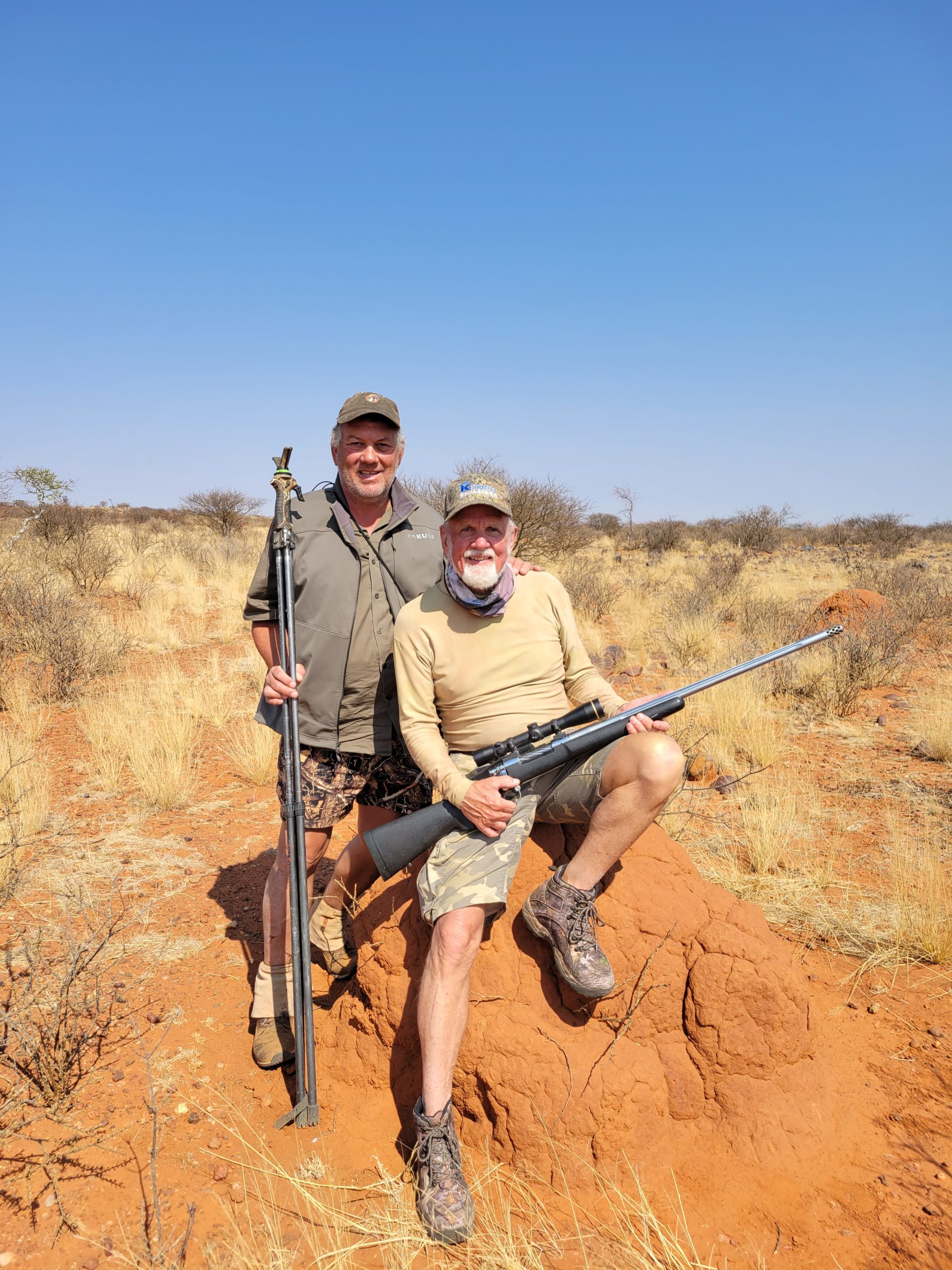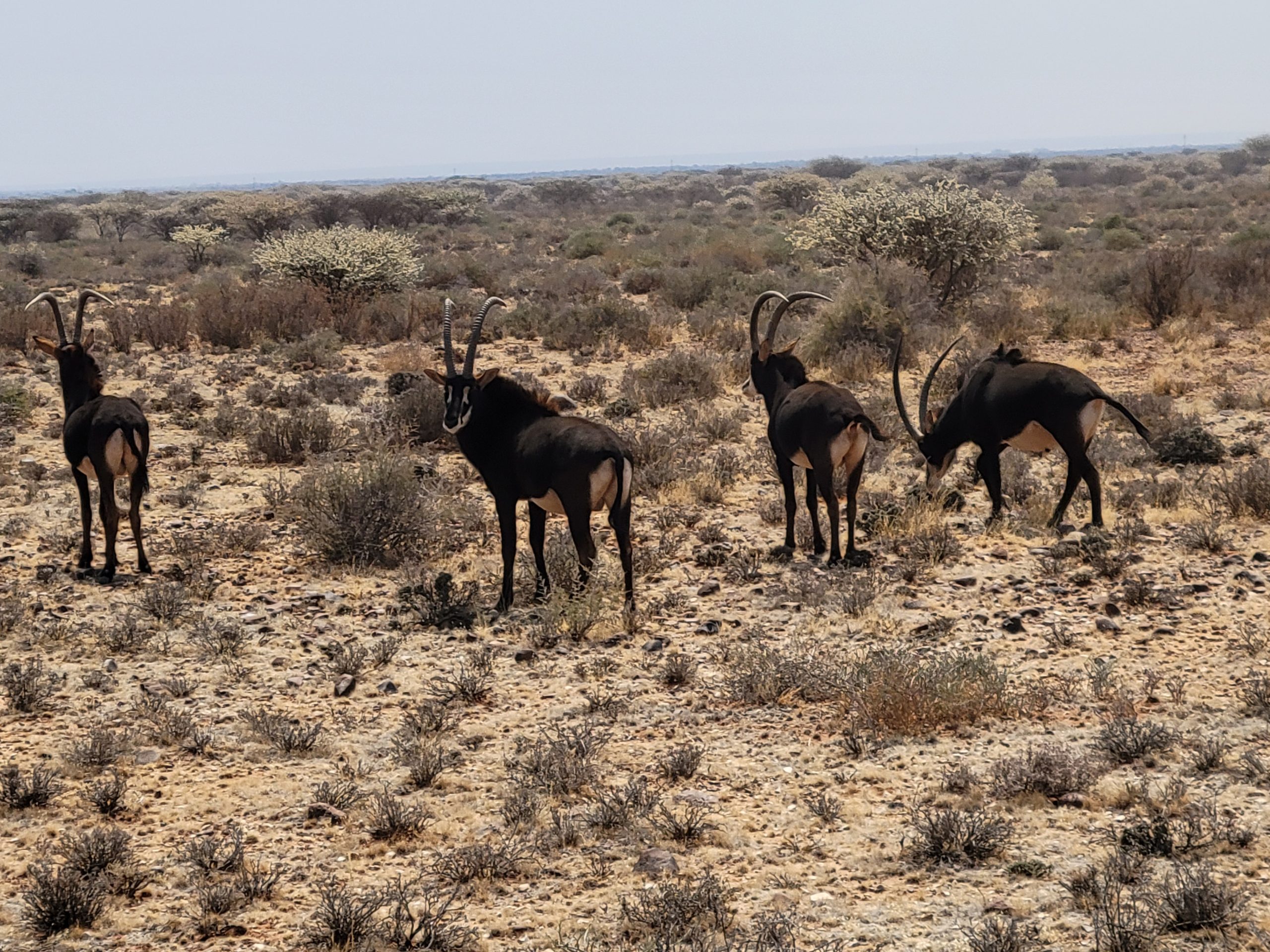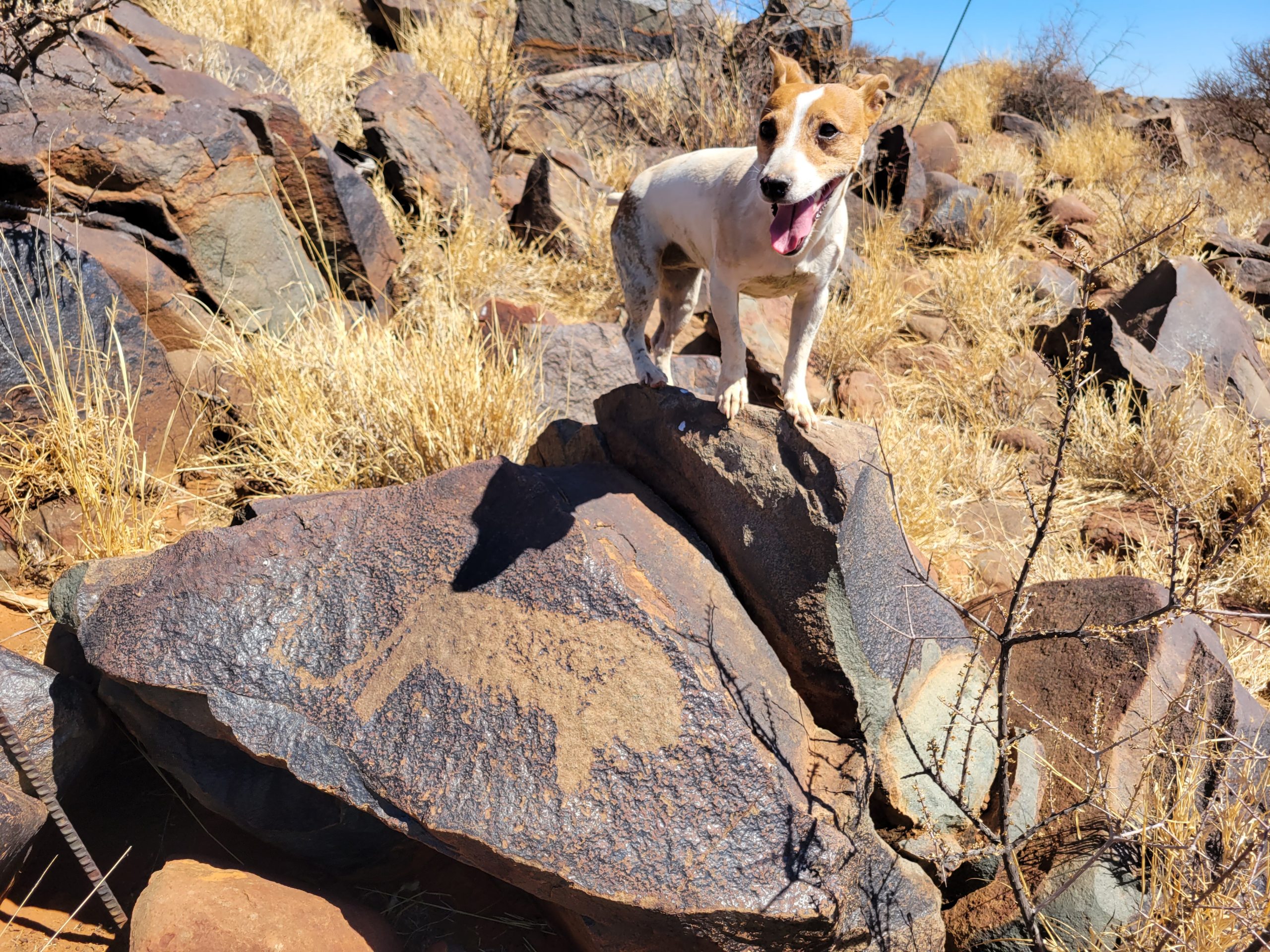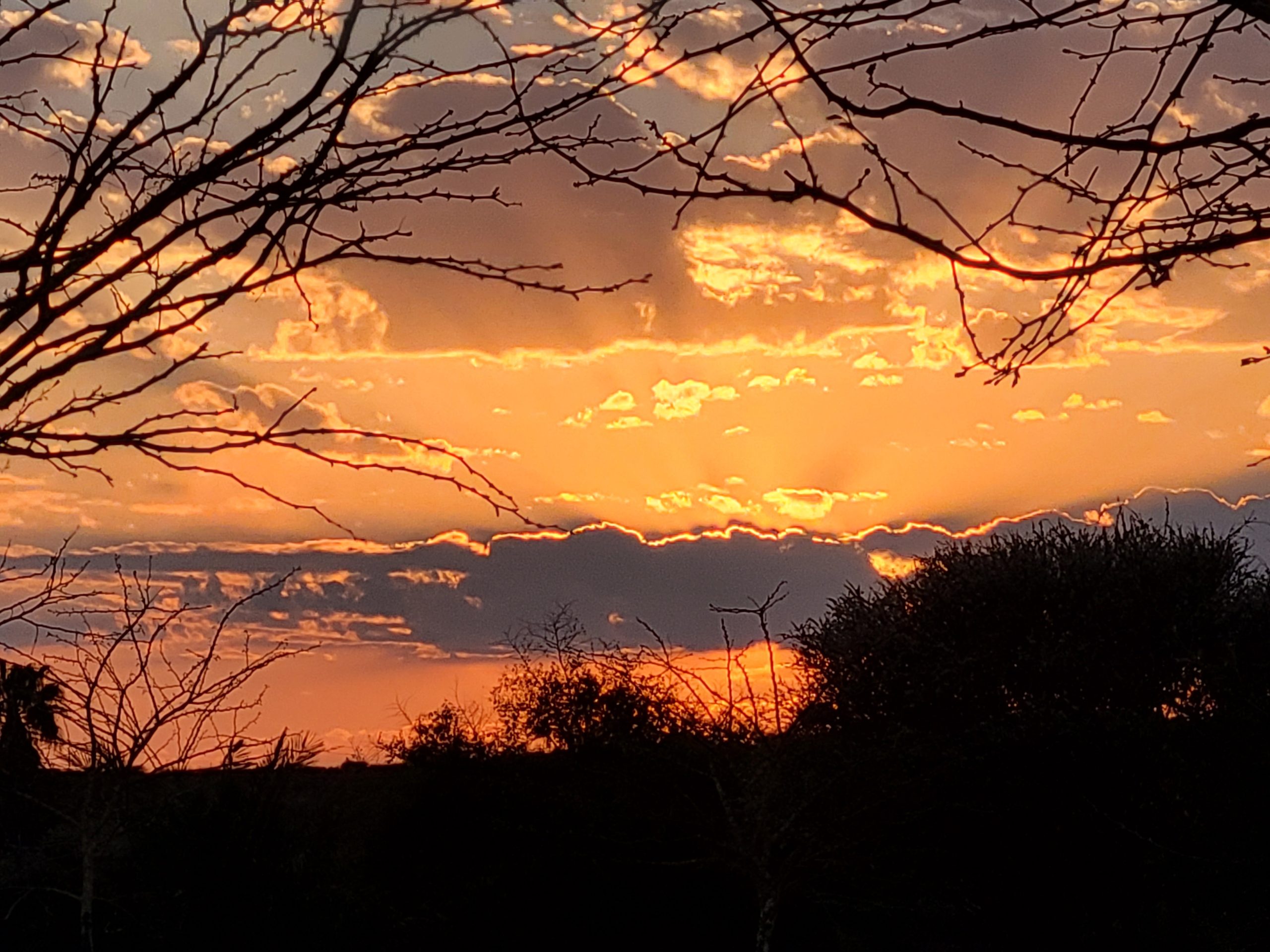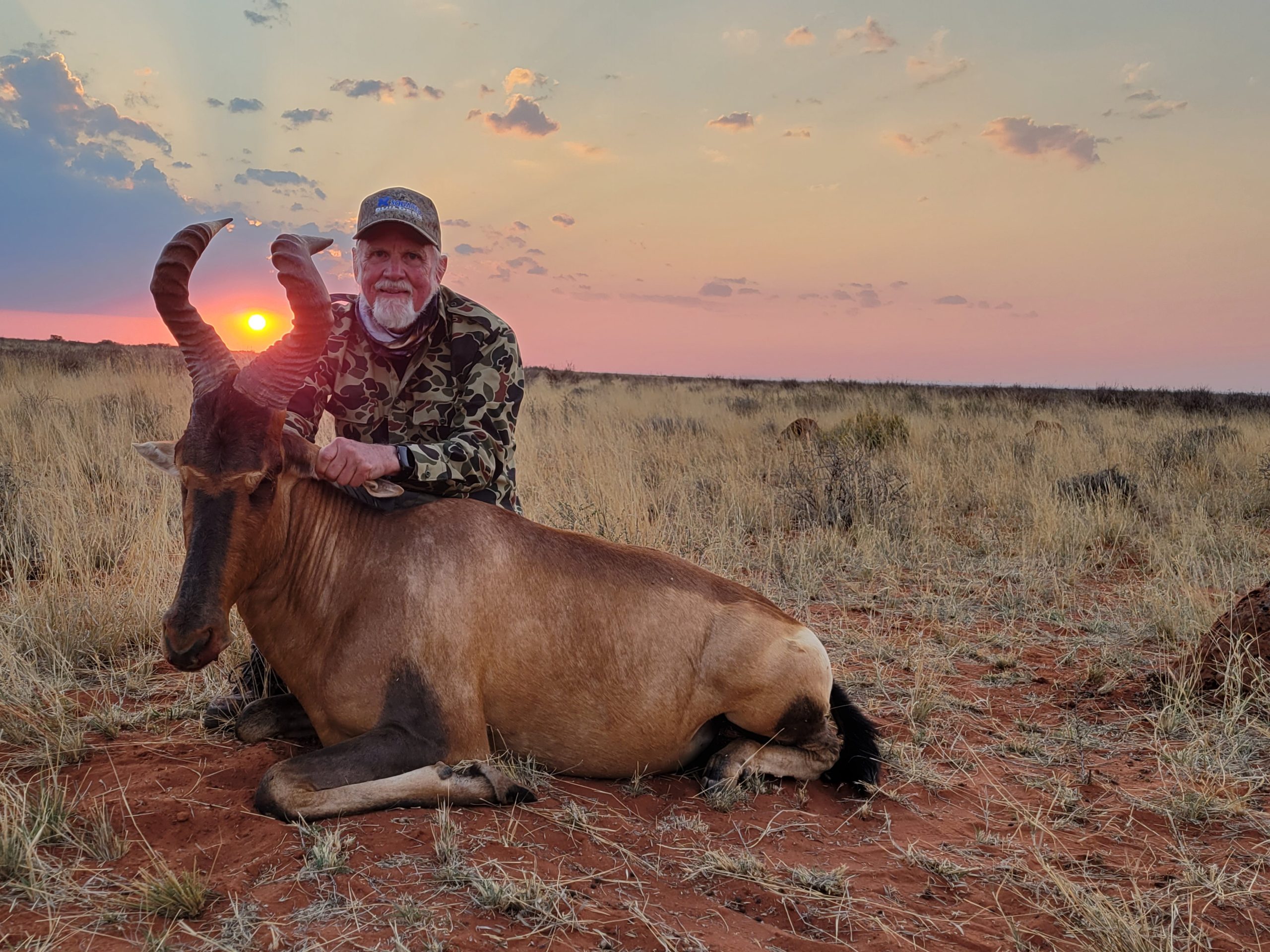Archery And Bowhunting – Why I Like It
With 5000 Broadheads to choose from, I chose to design and have mine made by a master knifemaker. These were all designed to take down hippo, elephant and rhino. All were tested on big game and all worked perfectly, though the far left one was never used. The middle one had a spiral cutting surface.
By Dr Adrian de Villiers
The reason archery and hunting with a bow is so special is because you are only as good as your last shot.
With archery there is no such thing as sighting in your bow and packing it away till next hunting season, taking it out of moth balls and going hunting with it. It takes regular practise, and it takes gym and exercise to stay in shape. Today’s bows are state-of-the-art machines with computer-designed and C&C cut aircraft quality aluminium parts – they are way better than the cast magnesium riser bows we used in the 1980s. The bows can be fine-tuned, and good archers can easily shoot a golf ball at 100m with them.
There are a number of reasons why bowhunting is so interesting. A rifle hunter can shoot an animal as soon as he sees it in a good position. But it’s just the beginning for a bowhunter. We have to know animal behavior in far greater detail, and especially herd animals.
I do not consider shooting animals at a feeder or at a waterhole as “bowhunting” although when I started I did do so quite a lot. However, all the animals I have entered into the SCI bowhunter’s record book I hunted on foot, and not over bait or from a hide, including the Big Five and a hippo. But I would urge new bowhunters to shoot at least ten animals from a hide until they get over their buck fever and to see which type of shot will have the best results.
It is thought by most hunters that the only shot is the broadside shot behind the shoulder, but that is not the case. When we are bowhunting on foot in the bush, a broadside perfect shot is not always possible or desirable, especially when you are 10 or 15 yards away. All herbivores have their eyes on the sides of their heads, and plains game, unlike us, do not have much of a “blind spot” so to hunt them you need to be more crafty than they are.
You can’t wait till they are close by standing broadside to you and then draw the bow – they will see that immediately. You need to quickly and silently draw as their eyes pass behind a tree or bush, and you must be standing dead still in a leafy suit or Ghillie suit so they don’t recognise you as a human. lt is hard to judge the speed of their movement while they are walking, so it’s a good idea to try get them to stop and then shoot. I use a soft, small animal sound like, “Ma”, similar to a baby wildebeest.
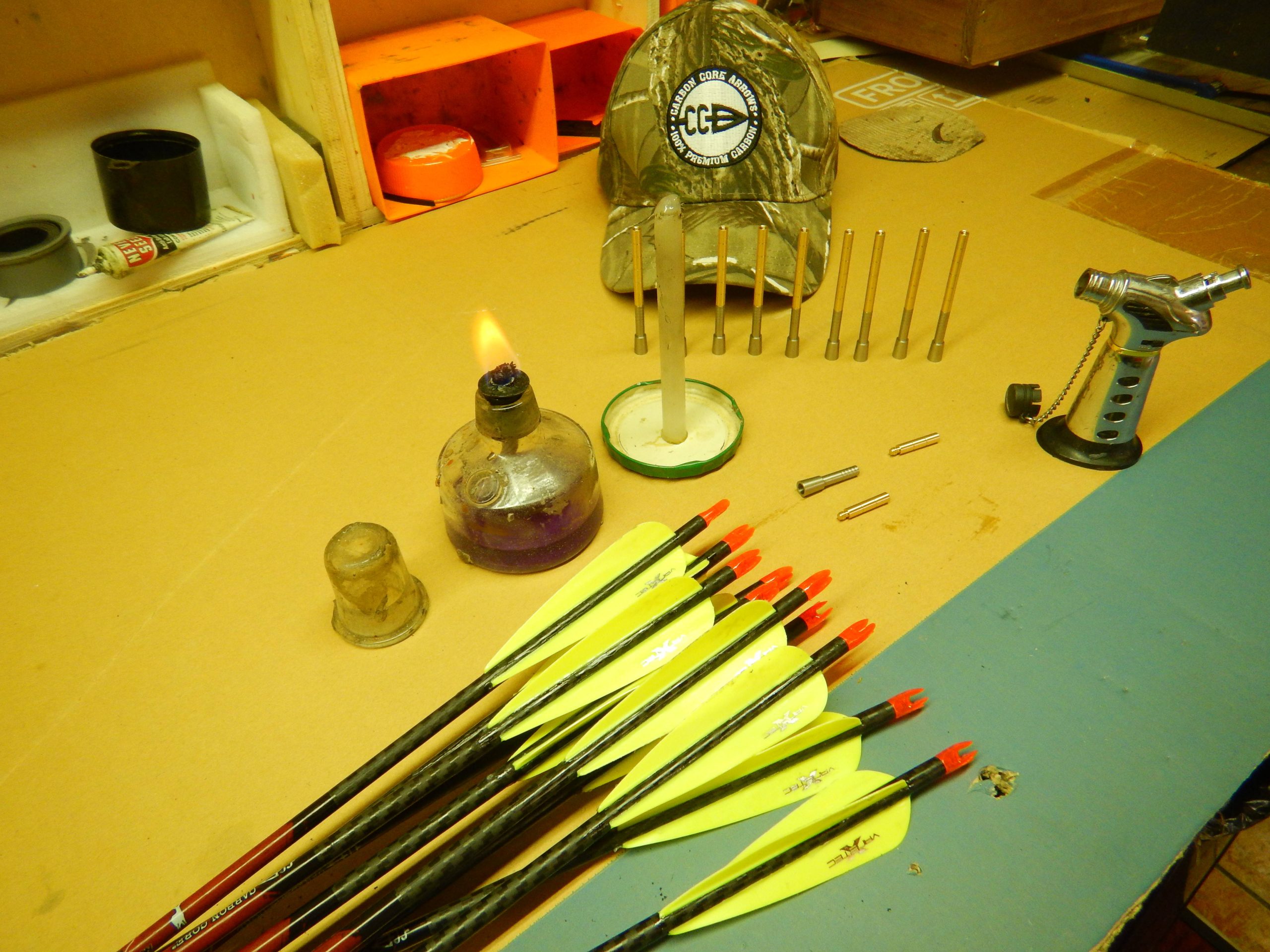
Today’s arrows are state-of-the-art carbon core arrows, within 1000th of an inch in straightness and stiffness known as the “spine”. Arrows that are heavily weighted up front with the correct “spine” penetrate game better. Pictured is the modular nature of these arrows where 50-gr brass inserts can be screwed together and screwed into the stainless steel insert (outsert). For correctness, each completed arrow is weighed in grains to within 4 grains of each other.
You don’t have to kill something to be “actively hunting”. You can walk and stalk and draw on animals that you are not going to kill just for the practice and excitement! It’s a great way to improve your skills. Hunting and not shooting animals you would normally kill will allow you to get all your ducks in a row – to get into a good position and choose the right moment to draw and aim without the adrenalin pumping stress of shooting a record-book animal.
The archery component of the bowhunt is also tremendously entertaining, and archery is a sport that you might never master. It’s not a sport where you can shoot a perfect shot every time, even under perfect circumstances. I have seen world-class archers, who have won many world titles, shoot badly under hunting conditions. I’ve had some amazingly good days where I could do nothing wrong, and weekends where I just could not do anything right. That’s what I love about it – it’s never over till the animal is in the cooler room.
Nowadays with the drama involved in getting a firearm license, more people are turning to archery. You can buy the bow and accessories in the morning and be practising in the garden by the afternoon. I have taught a lot of novice bowhunters to shoot a bow, and within an hour they are sitting in a hide and hunting animals that same day.
Hunters that used to shoot with rifles become obsessed with bowhunting quite easily. The thought that you are supplying the energy to the arrow that kills the animal puts you much closer to your quarry, and the absence of that devastating explosion of energy and noise is refreshing. I have often shot animals in a herd without any other animal even noticing it.
Many bowhunting farms, including mine, have exemption to hunt all year around, so it’s possible to keep busy all year and thus to keep your equipment in pristine condition all the time.
3 D archery on animal-sized rubber targets is also great exercise and fun. You can choose different shooting lanes to shoot at the same target. When you get proficient at shooting though tiny gaps and being able to visualise the arc that the arrow will take on its way to the target, you can teach yourself to shoot some insane shots, whereas another bowhunter will not even see an opportunity. Whenever I come back from a hunt I have a ritual. I take all my arrows, wash them, and spin them on a jig to make sure they are 100 % straight. If you own carbon arrows you should bend them quite harshly and listen to them – if you hear a creak or crack, discard them. They could explode on the next shot.
Fixed-blade heads and all used heads are either re-sharpened carefully or the blades replaced with new ones. A broadhead should only be shot once and then be re-sharpened. A broadhead shot into an ethafoam butt is not sharp enough to hunt with. Once the arrows, fletches and points are checked, the arrows should be shot once more at a target to check that they are shooting true. The same applies to every new arrow you buy: test it by shooting it before you hunt with it. Every arrow should be weighed when you bring them home to make sure they are within a few grains of each other in weight. Although 20 gr difference in weight has very little effect over 30 yards, over 100 yards it could be as much as a meter higher or lower.
A light and heavy arrow of the same make will look identical. One may have a brass insert, one a plastic or aluminium insert. Because a light arrow may leave the bow before it has taken all of the bow’s energy, a heavier arrow may take more energy, and so the two could shoot a similar height up to 30 yards, but at 60 yards the heavy arrow will drop way more, so testing them from close may not work. Weighing them will tell.
I strongly urge anyone who is reasonably fit and dextrous to try bow hunting instead of hunting with firearms. You will be amazed how much more enjoyment you will get being fully camouflaged and getting into bow range of an animal and hunting it without the animals 50 yards away even knowing that a shot went off.
I have been retired many years now and my bow and archery equipment keep me busy most days for a few hours. Pulling an 85 # bow is good exercise, too. If you are just thinking about archery and need advice on what to buy and where to get it and how to get started, please email me.
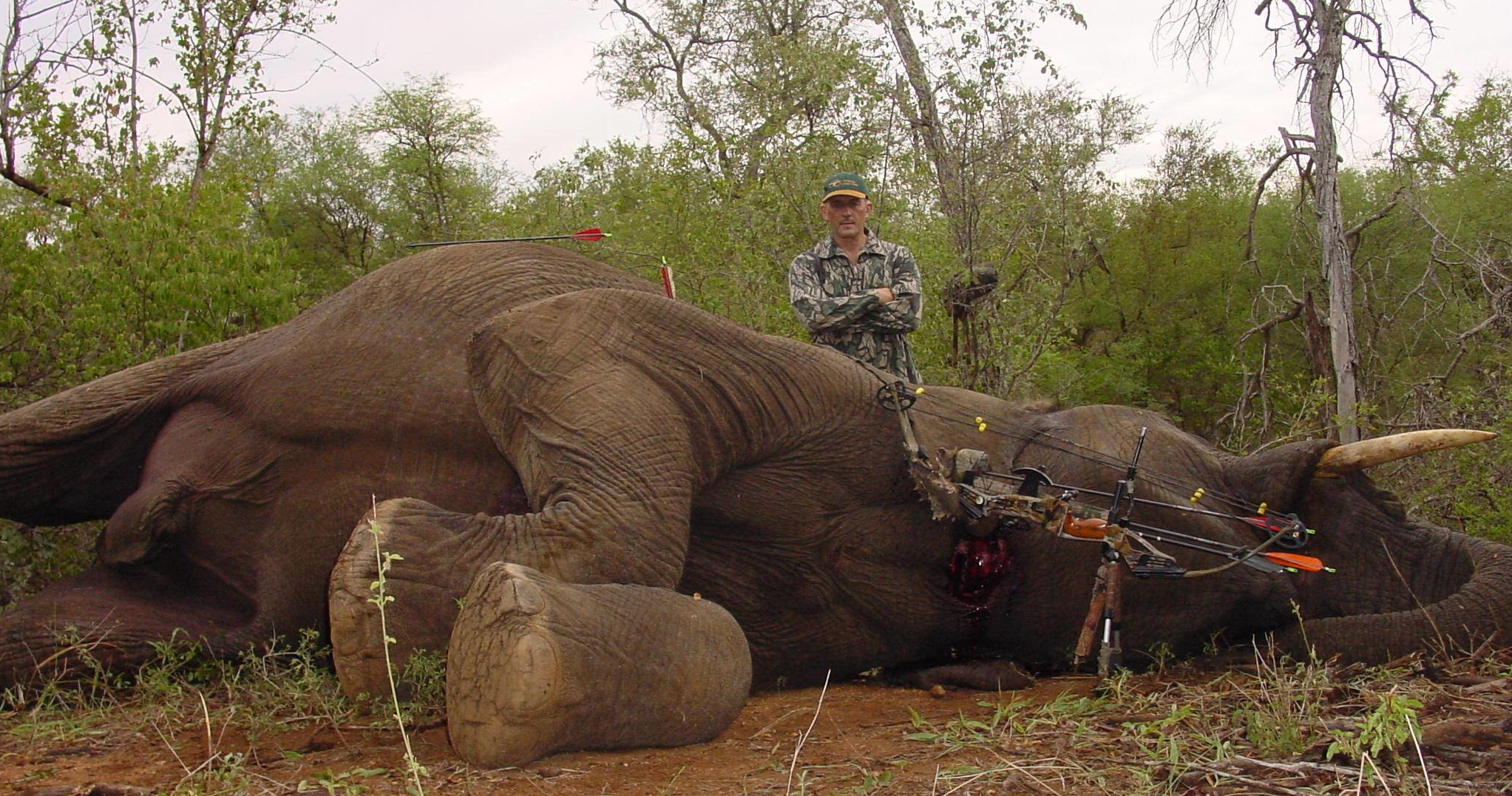
With a correctly placed arrow of the right weight, the correct Broadhead will take down any land animal humanely and quietly. Often the rest of the herd will not even notice.
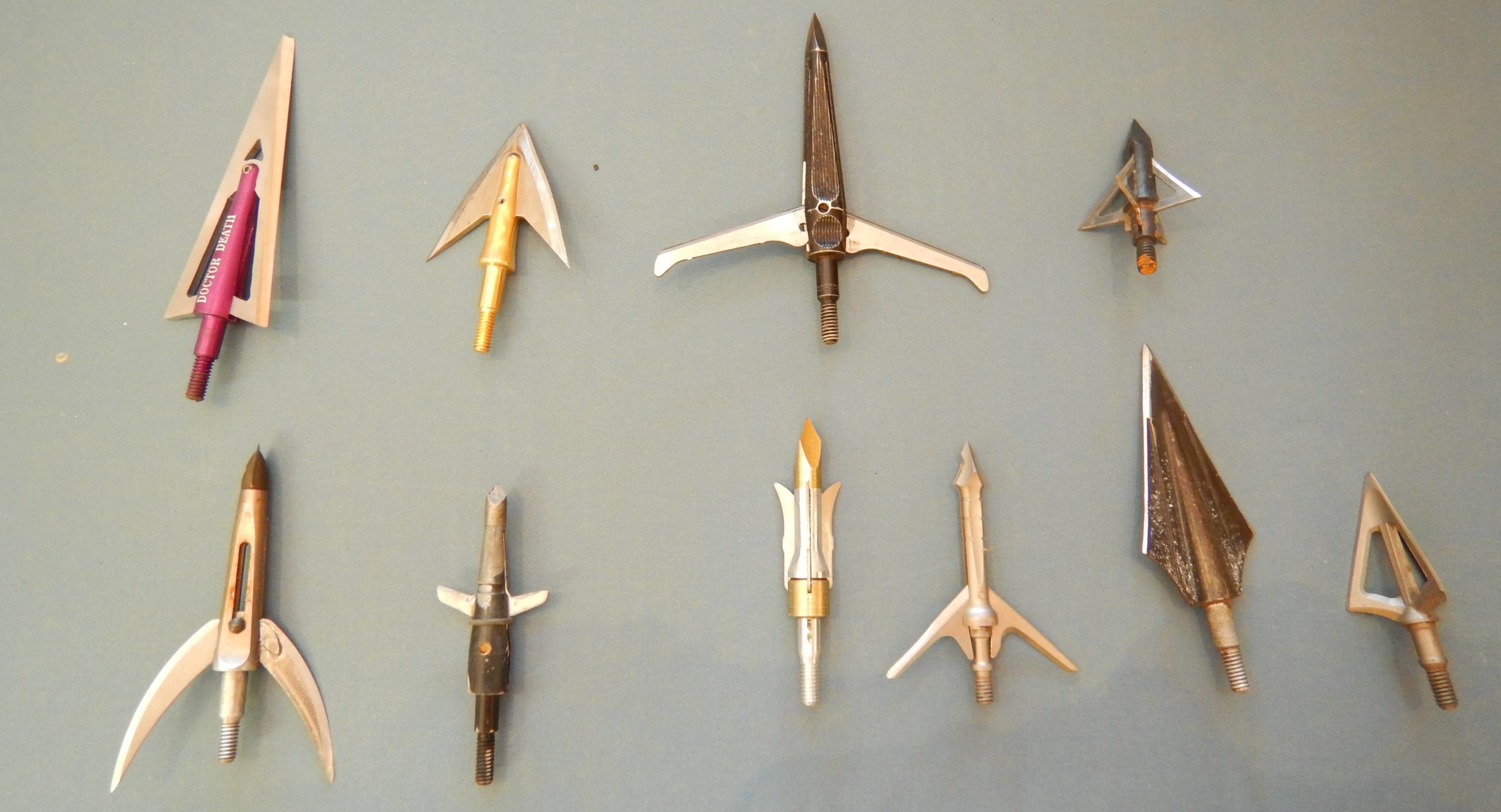
Choose two broadheads that work for you. One for big game, where I would recommend a solid steel fixed blade, (two-blader) like the top left one. For medium game I would recommend a good mechanical three-blader like the Spitfire Maxx.
Biography
Dr Adrian de Villiers: Professional hunter & bowhunter, IBEFMaster Bowhunting Instructor. srac@icon.co.za
Archery and bowhunting have pretty much been my life outside Radiology and Game farming for the last 35 years or so. I started my hunting career hunting with a Colt Python handgun in 1976. By 1982 I had shot most plains game in SA including Cape buffalo and a world record white rhino. By then I had a huge handgun collection from a .357 to a 45 70. I hunted the rhino with a .375 JDJ Thompson contender single shot pistol. By 1982 we were regularly shooting varmints out to 300m and game at similar distances. My ears were damaged, and Barry Gordon (Sharp Edge Sharp Shooter) convinced me to try bowhunting, and the rest, as they say, is history. I never hunted again with any firearm, and I never will.

